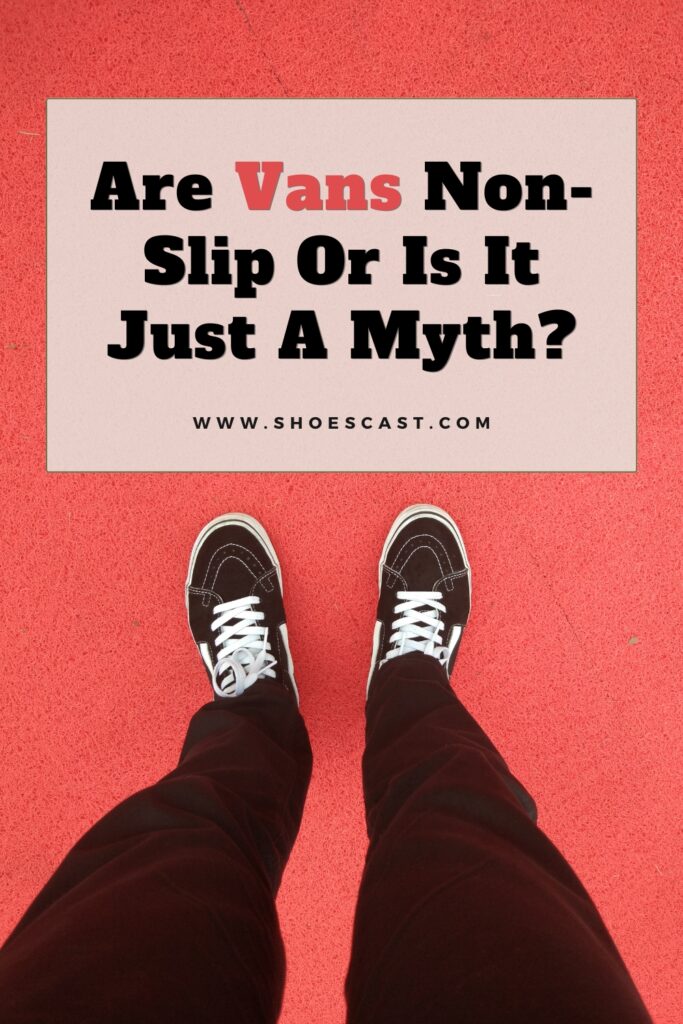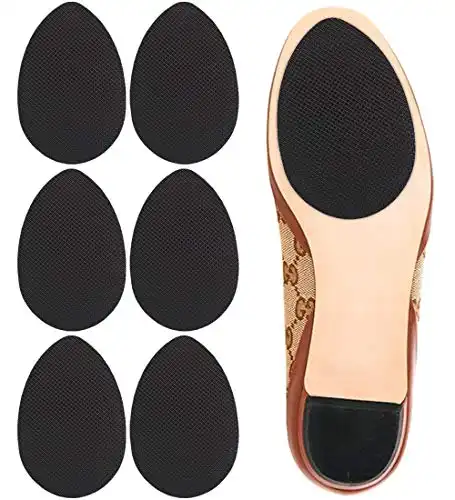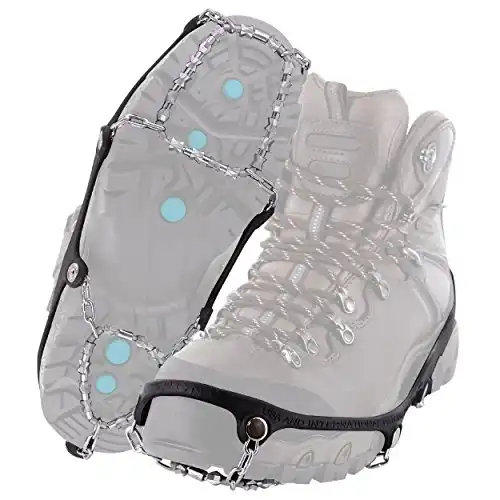No matter where you work, a pair of non-slip shoes is a must-have. Vans is one of the most loved brands in the world today, and they’re a great choice when you want to stay fashionable yet comfortable at work. But, are Vans non-slip?!
Vans’ rubber outsoles with diamond patterns have become recognizable all over the world. But, are these iconic outsoles slip-resistant? If you’re working in a restaurant, in a hotel, or anywhere else where you walk over slippery surfaces, you’d want footwear that can make it easier for you.
It comes as no surprise that more and more people are interested in wearing Vans to work. Not only do they look good with pretty much any casual outfit you can think of, but they’re also fairly affordable.
Although they were originally made for skateboarding, they’ve gone far from being reserved for skaters only. Because they’re so versatile, people started wearing them to the gym, on their daily walks, or in restaurants.
However, if you work in such places, you’d want to know are Vans non-slip or simply a fashionable choice. Luckily, we’re here to answer all of your questions. We’ll see if Vans are a safe option, how you can increase their traction, and more! So let’s dive right in.
Are Vans non-slip?
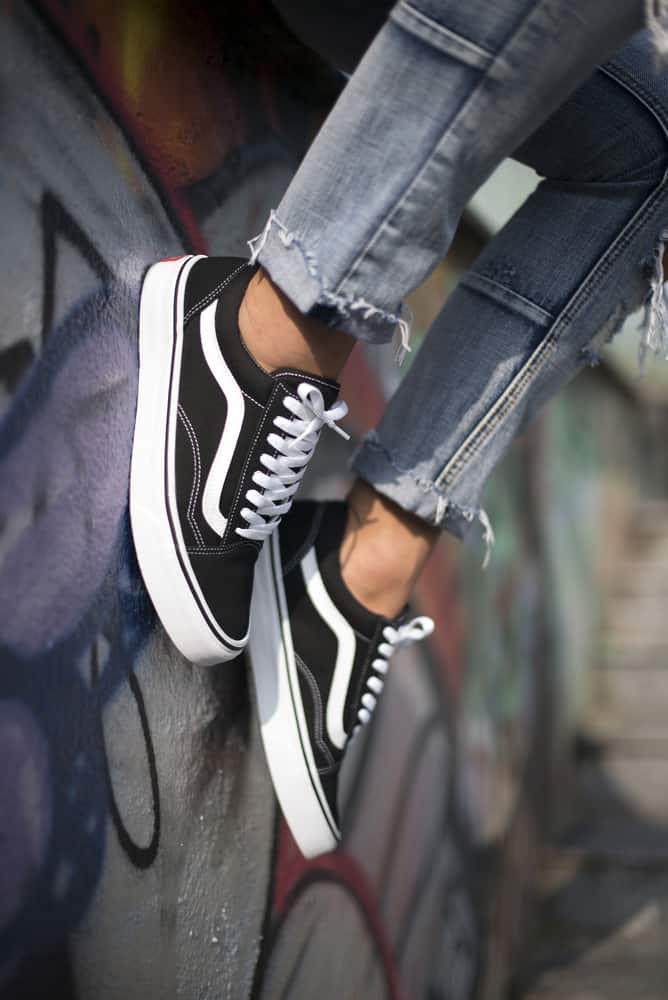
So, are Vans non-slip, or is that just something people like to believe because they want to look good in their workplace? Well, we’ve got some good news for you.
Vans are definitely non-slip! Due to their rubber outsoles and patterns, they’re super slip-resistant. In fact, these sneakers were made for skateboarders who need shoes that will stay on the board. It comes as no surprise that Vans have such a huge and loyal fanbase.
Their outsoles are made of high-quality rubber that provides good traction. Because of that, even when you’re walking fast over wet surfaces, you’ll be safe from falling.
Their amazing grip and support make them a pretty common choice among both skateboarders and workers who are exposed to slippery surfaces. So, if you’re working in a restaurant or you do cleaning, Vans would be great and fashionable non-slip shoes for you.
What makes Vans non-slip?
The answer to “Are Vans non-slip?” is short and sweet – yes! They’re made for skating so, naturally, they’re slip-resistant. It’s their main feature, after all. If you’re looking for comfortable and stylish shoes that won’t make you fall down every time your feet touch slippy surfaces, try them on.
They provide incredible grip and perform well even if you work in a restaurant where floors are often wet and greasy. Vans will help you do your work effortlessly, without fear of slipping or sliding. However, we have to discover what makes them slip-resistant.
1. Their durable rubber outsoles
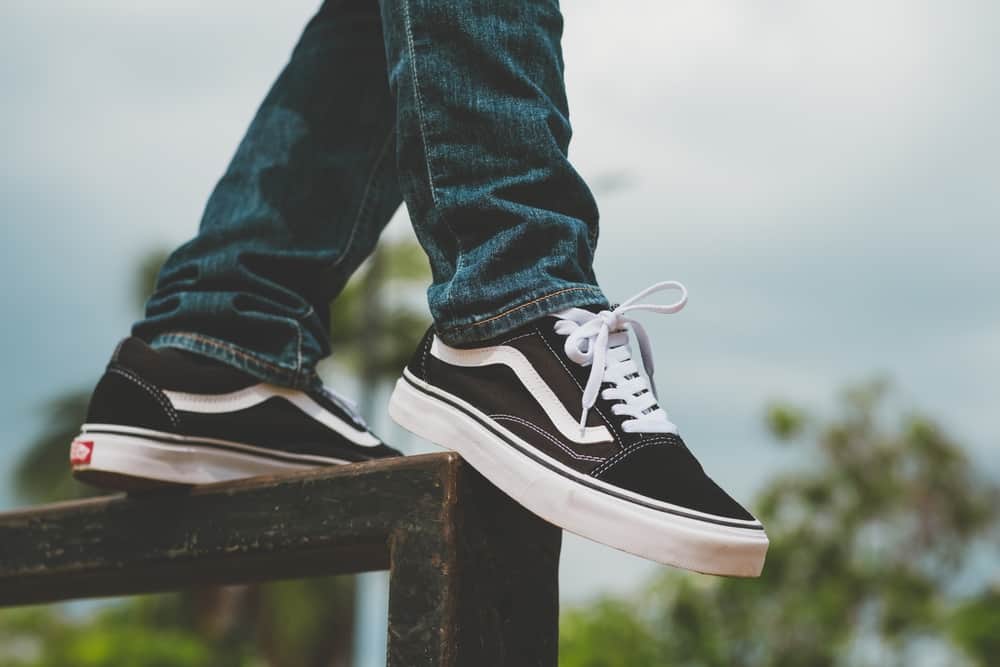
You’ll no longer have to wonder if Vans are non-slip when you find out what they’re made of. The main raw materials used to design our loved Vans are high-quality PVC and rubber. On top of that, they have soft rubber soles, making them non-slip even when walking on wet surfaces.
If you decide to wear Vans to work, you won’t have to worry about slipping and tripping in front of everyone anymore. When you’re looking for slip-resistant shoes, you’ll want them to be made out of rubber. It’s a great material that provides traction, fraction, and grip, on any surface you might be walking on.
Vans use a combination of synthetic and natural rubber on their sides and soles. On top of that, they use a special vulcanization process during production. The rubber they use is “baked”, which provides exceptional resilience.
Vulcanizing rubber brings many benefits, and some of them are:
- Good electrical insulator,
- They easily return to their original form,
- Low water absorption,
- Resistance to organic solvents,
- High resistance to abrasion and oxidation.
As compared to other materials that outsoles are often made of, rubber is by far the most slip-resistant one you can find. However, not all rubber outsoles are designed to be worn on slippery, wet, or greasy surfaces.
For example, there are some non-slip shoes that are designed to be worn on dry floors, such as basketball courts. Luckily, Vans are not like that, and you can safely wear them no matter if the floors are dry or wet.
2. They’re made of high-quality materials
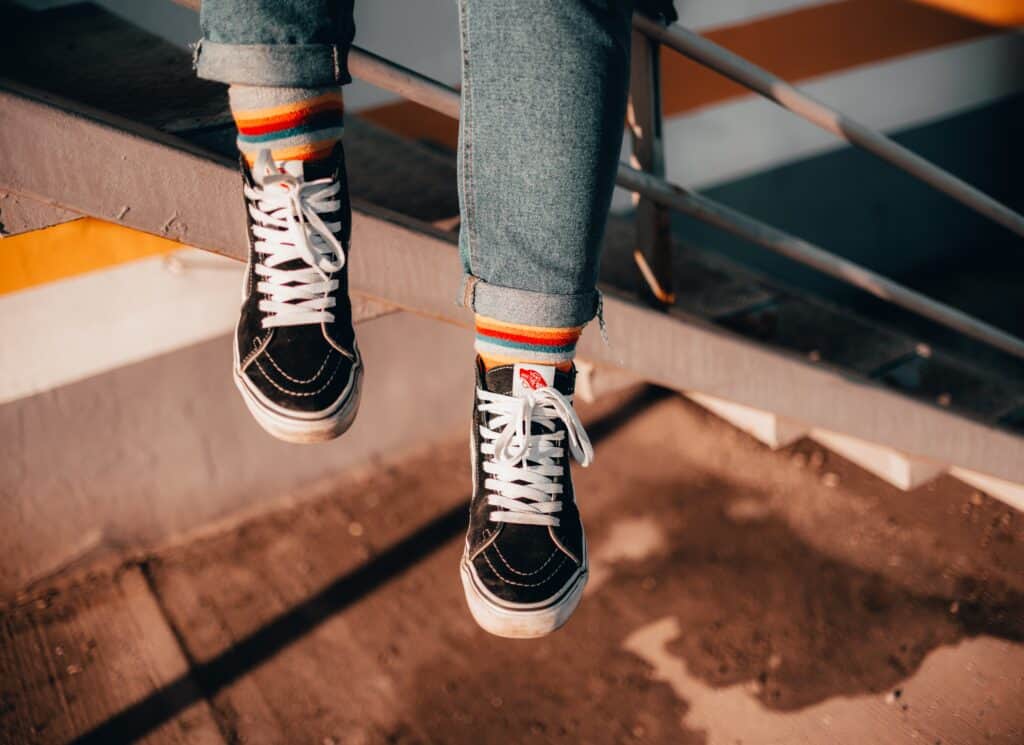
One cool thing about Vans is that they don’t use synthetic materials like EVA foam in their shoes. The main reason behind this is that they would melt during the vulcanizing process.
Because of that, Vans shoes are typically made of rubber, canvas, or suede. All these materials are able to withstand the high levels of heat every pair goes through during the manufacturing process.
On top of that, Vans uses the highest-quality rubber for its shoes. The higher the quality, the better the grip. You’ve probably had some bad experiences with poor rubber outsoles that you ended up slipping in.
3. Their slip-resistant tread patterns
The tread pattern on the outsoles of your Vans isn’t there just to leave cool marks on the floor after you walk across it. In fact, they play a major role in their slip-resistant feature.
Actually, the tread is in touch with the ground which is the main reason why it helps shoes stay non-slippery. Although the pattern on your Vans is now their trademark, it was carefully designed to make them stable and resistant to slipping and sliding.
It’s not just a cool feature, but it actually provides your sneakers with traction, grip, and friction. So, all those rhombus and diamond shapes aren’t there just for the aesthetic.
They keep water (and any other type of liquid) away from your soles and honestly, they do an amazing job at it. Because of this pattern, you’ll be able to wear your Vans in the pouring rain. At the same time, you won’t have to buy yourself a new pair of shoes if you’re working in a slippery environment.
Test on different surfaces

We know they’re slip-resistant and made of high-quality materials, but are Vans non-slip on EVERY surface? Or, does the type of surface influence the level of their resistance and stability?
To see if Vans are truly non-slip, it’s important to go over some of the most common surfaces where you can wear them. That way, we’ll see just how durable these famous shoes really are.
1. On concrete
You probably have no issues wearing Vans on dry concrete surfaces. This is the most common type of surface you can wear them on, and the designers made sure that they’re slip-resistant. Here, you’ll experience great traction and grip, and you can even run in them without experiencing any slipping or sliding.
Their rubber outsoles perform wonderfully on dry concrete. However, if it’s wet, you should be a bit more careful. Yes, they’ll still provide good slip resistance, but you should still be cautious.
Another thing you should pay attention to is whether the concrete is covered in moss. If the answer is yes, you should be extra careful. Moss is super slippery and, no matter how good the slip resistance is, it’s still hard for your shoes to provide any traction.
Lastly, if you see any oil marks on the concrete – go around them. It’s always better to avoid it than to test your shoes and end up with an injury.
2. On tiles
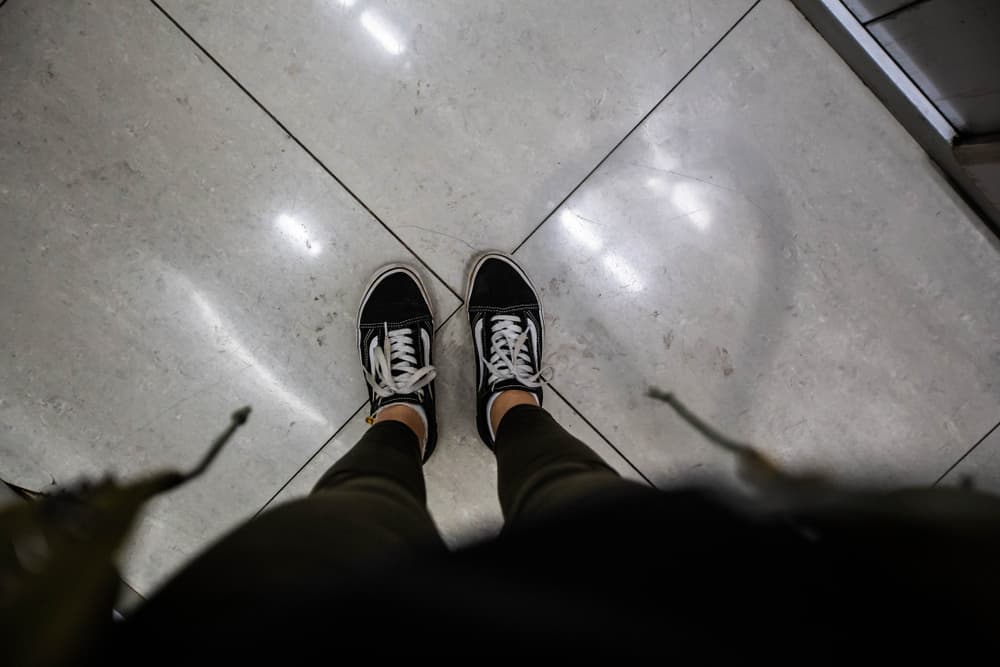
When worn on tiles, Vans work perfectly well as slip-resistant shoes. If your job requires you to walk on tiled floors, then Vans would be a great footwear choice for you.
Although Vans hold up pretty well, you should still be careful about walking on tiles. It’s a pretty uncertain surface that gets slippery fairly easily so it’s always better to be safe than sorry.
No matter how much resistance your footwear provides, wet tiles aren’t something you should mess with. Slipping and falling can cause serious injuries, so make sure you’re always thinking about your steps if you’re walking over them, and don’t attempt to do any running or sliding.
3. On laminate flooring
If you’ve just finished cleaning laminate flooring and it’s still wet, it can be quite slippery. Even without spilled liquids on it, there’s a great risk of slipping and falling. Vans perform perfectly well on both dry and wet laminate, although you should still be careful.
Just like was the case with wet tiles, we don’t recommend you run or skid on wet laminate either. Then again, why would you? Wait for the laminate to dry down and your Vans shoes will provide you with the perfect amount of slip resistance, stability, and traction.
Their rubber soles and diamond pattern stick well to laminate, making Vans shoes a great choice if you’re going to spend hours working on such flooring. They’ll provide you with a good amount of grip, traction, and even comfort. You won’t have to worry about slipping or your feet hurting after a long day on them.
4. On the tarmac
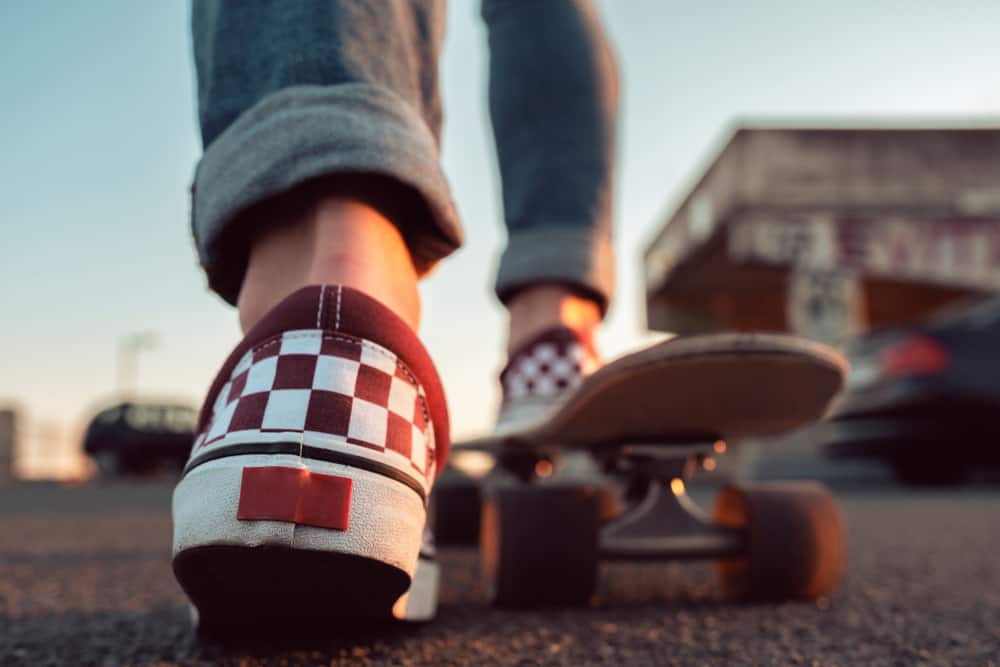
Because tarmac naturally has some traction, when combined with the amazing non-slip properties of Vans, it provides a perfect experience free of slipping, sliding, or falling. In fact, this type of surface makes Vans a safe choice even if you plan to run around!
Walking on the tarmac when wearing your Vans feels great. Not only is it comfortable, but it helps you enjoy your walk more because you’re no longer worrying about slipping at all. This is a great choice when you plan for a stroll or take your dog out for a walk.
In fact, wearing your Vans on the tarmac is a safe choice even after it’s been raining. Of course, you should still avoid grease or oil, even on the tarmac. After all, you should do that no matter what you’re wearing, just to be safe.
Because the tarmac has grit salt, you can wear your Vans even in winter. Of course, they won’t provide you much protection from the cold, but they’re a safe choice if you plan on running short errands or simply walking to your car.
How to increase the traction of your Vans
If you’re googling “are Vans non-slip” because you still managed to slide or fall, then you might want to increase the traction of your pair.
Increasing the slip resistance of Vans isn’t something new. Many shift workers and skaters have come up with different ways how you can add some extra resistance if necessary. Here are some of our favorite tips that’ll keep you safe.
1. Attach non-slip soles or pads to your Vans
A simple way to increase the traction and slip-resistance of your Vans is by using products that were designed to achieve exactly that. One such product is non-slip soles.
I know, we’ve just spent this entire time explaining just how slip-resistant Vans’ rubber soles really are. However, for some people and their workplaces, that’s simply not enough.
Luckily, you can get non-slip soles from any local shoe store or you can order them from Amazon so they arrive straight at your door. The best part is – they’re budget-friendly and easy to attach! You can do it yourself in no time, and the whole process is pretty easy.
Simply take your brand-new soles (like Dr. Shoesert Non-Slip Shoes Pads Adhesive) and attach them to the existing soles of your Vans. It’s that simple, yet it makes a huge difference for people who are often exposed to wet floors when cleaning, or for skaters who like that extra adrenaline rush they get when skating on wet surfaces.
If you don’t plan on putting on a whole new sole on top of your existing one – don’t worry. Some smart people were annoyed by the same thing, so they came up with non-slip pads.
They’re smaller and also pretty easy to attach. Simply add them to the soles of your pair and you’ll notice a huge difference. They’ll give your shoes an extra layer of traction and a lot more grip, making them a safe choice of footwear when dealing with spills or wet floors.
2. Apply slip-resistant spray
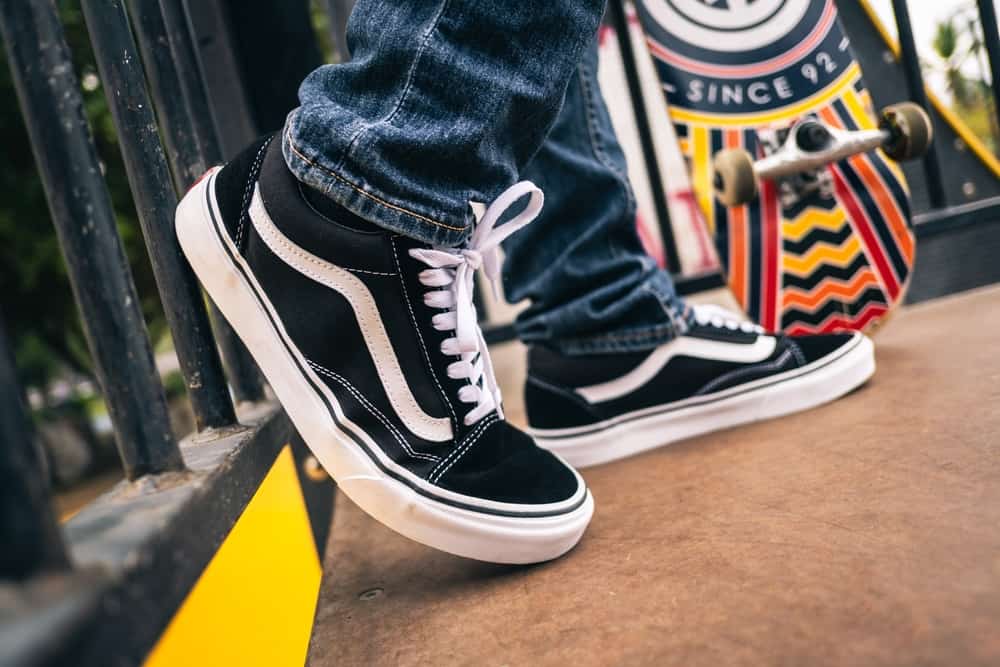
If you want a quick fix that works efficiently, there’s a product that will help you achieve exactly that – a slip-resistant spray. Trust me, it can be a real lifesaver. So, how do these sprays work, exactly?
Slip-resistant sprays add an adhesive coating to your Vans’ soles, significantly increasing their grip. If you worry about damaging your Vans with the spray, we recommend using one specifically designed for rubber soles.
Because these sprays are water-resistant, you don’t have to worry about them washing off in the rain. They’ll last you for a long time and, once you notice your Vans are becoming slippery, simply spray the soles again and you’ll be good to go!
3. Fasten ice grips onto the soles
If you’re such a huge fan of Vans that you plan on wearing your pair even in icy conditions, we have a solution for you. Adding a pair of ice grips to your shoes is a perfect solution to your problem. And these Yaktrax Diamond Grip All-Surface Traction Cleats are a great choice.
Attaching them is hardly a process, too. Simply fasten them onto the outsoles of your pair of Vans and you’re safe to walk on pretty much any icy surface you can find.
The ice grips work by puncturing the ice while you walk. That way, they give you more stability and prevent you from sliding or slipping. They’re an ideal choice for those of you who are brave enough to wear their Vans during winter or when it’s snowing outside.
4. Scuffing
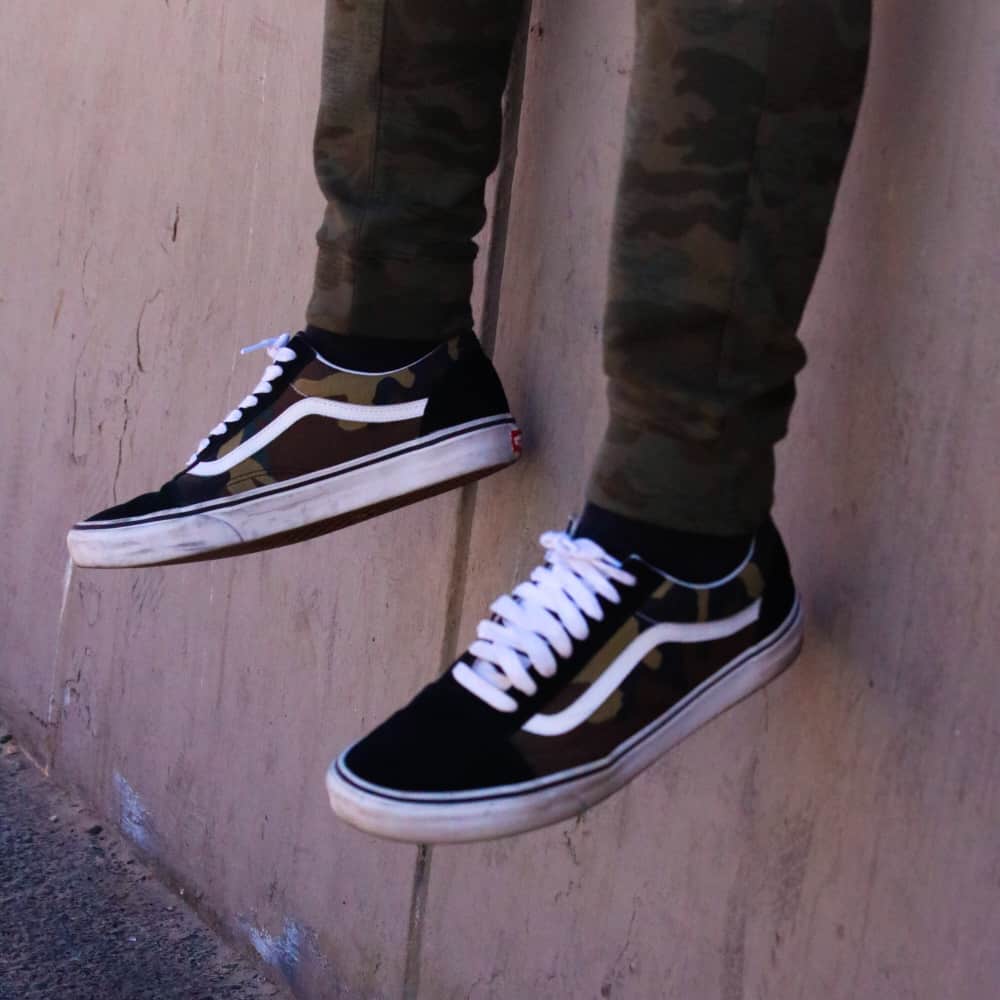
Finally, you might have to go a bit harsh on your new pair, but all for the sake of keeping you safe. Plus, it might help you break them in, which will make your brand-new Vans a lot more comfortable to wear.
Scuffing the soles of your new pair of Vans is an old-school way of making them slip-resistant. It’s a pretty efficient way to add grit to them or break them in, both of which increase their stability and slip resistance.
There’s a simple and easy way to do this. Take your new pair of Vans outside and scuff them against a brick wall. There’s something so rebellious about it, isn’t there?!
If you’re not a huge fan of scrubbing your brand-new shoes against a brick wall, you can use sandpaper to achieve the same thing. Simply scuff the soles a bit and you’ll notice a huge difference in their slip resistance.
Read more: 7 Best Shoes For Drummers That Strike The Right Note
